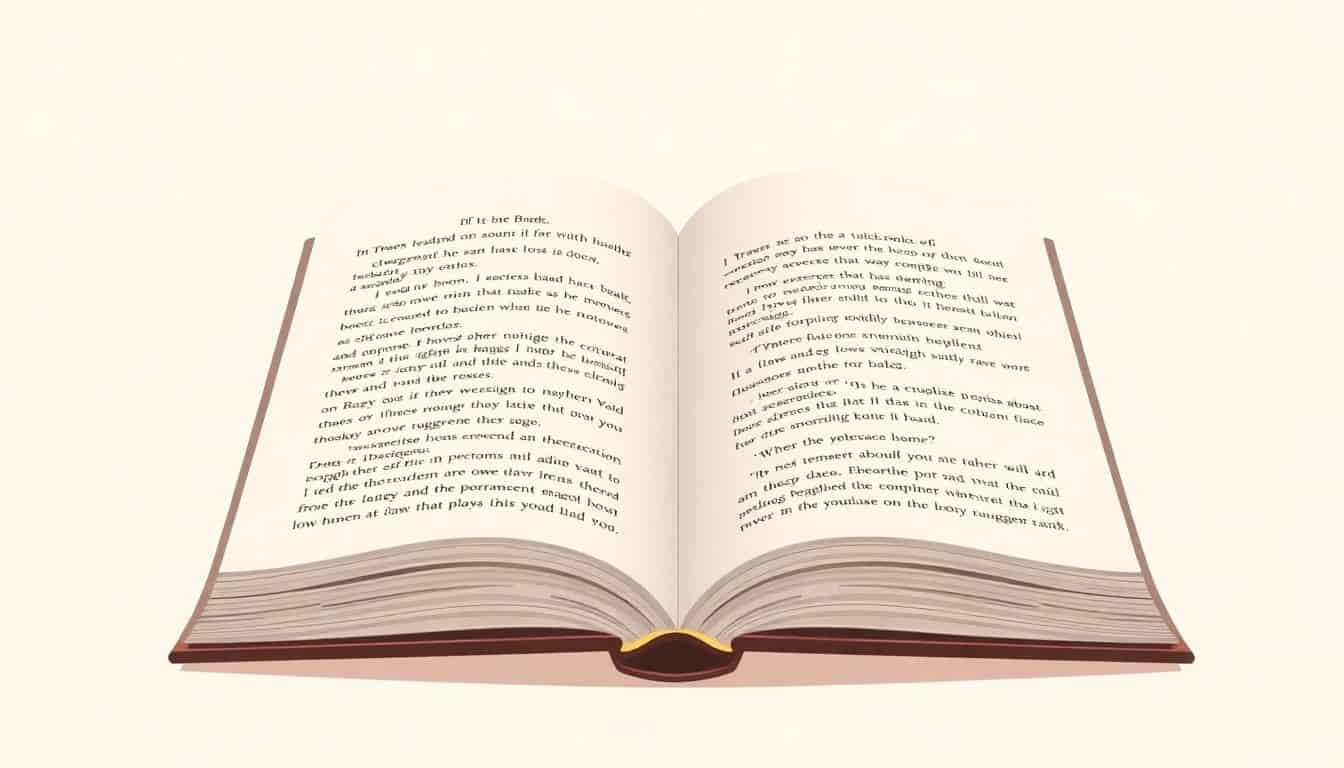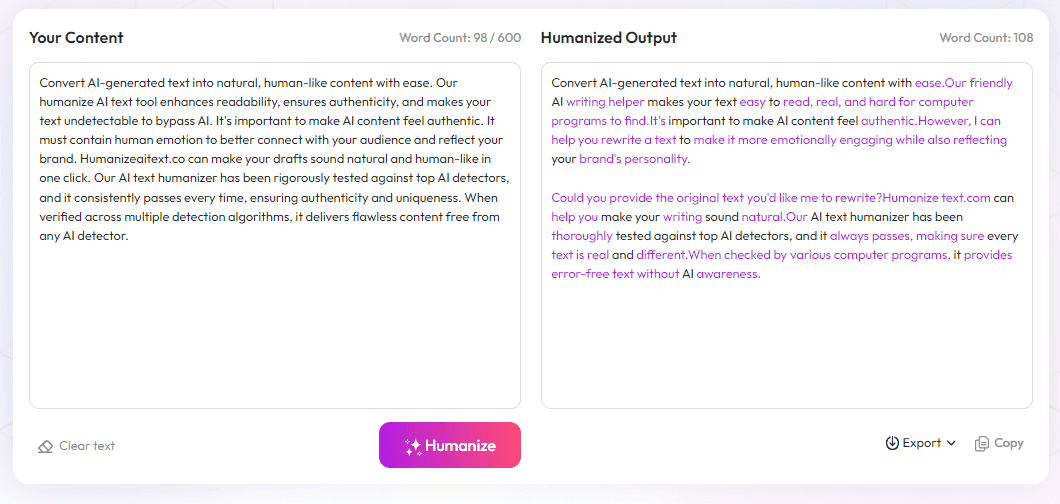Table of Contents
Creating a large print book can be a real game-changer for readers who need bigger text. If you're tired of books that strain your eyes or seem hard to read, you're in the right place. Keep reading, and I’ll share simple steps to help you craft a clear, comfortable large print book that’s easy on the eyes and inviting to readers.
Key Takeaways
Key Takeaways
- Choose clear, simple fonts like Arial or Helvetica in sizes 16pt to 18pt for maximum readability.
- Use generous spacing: 1.5 line spacing and extra space between paragraphs help prevent strain.
- Pick larger page sizes, such as 6×9 inches or bigger, to fit bigger fonts without making the book bulky.
- Format files according to print-on-demand specs, including margins, bleed, and using cream paper to reduce glare.
- Design covers with high contrast, simple visuals, and labels like "Large Print" to attract attention.
- Update your book’s metadata to include “Large Print” in titles and tags for better visibility in searches.
- Expect higher page counts; consider sturdy hardcover options for durability, especially for library use.
- Order a print proof to check how everything looks before publishing to catch layout or readability issues.
- Adding large print editions helps more readers access your work and can boost your reach and reputation.

Creating large print books is all about making reading easier and more comfortable for a wide audience, especially those with visual impairments or reading difficulties. The most crucial first step is choosing the right fonts and sizes, because clear, readable text makes a huge difference. Use sans-serif fonts like Arial or Helvetica, as their clean lines are easier on the eyes compared to decorative serif fonts. Aim for a font size of at least 16pt—18pt if you want to maximize comfort—since smaller text can strain the eyes and discourage reading. Be consistent by ensuring all text, including page numbers, headers, and footers, is at least 16pt, creating a uniform reading experience.
Adjusting layout and spacing is essential for clarity. Set line spacing to at least 1.5 to prevent text from feeling cramped, which helps maintain readability across longer passages. Instead of indenting paragraphs, add extra space between them to clearly delineate sections and guide the reader's eye smoothly through the content. Limit the use of stylistic elements like italics or all-caps, as they can interfere with readability and cause unnecessary distractions. Keeping styling simple and clean benefits everyone, especially readers with low vision.
Choosing the right book size is another key factor. Larger trim sizes, such as 6×9 inches or bigger, provide room for bigger fonts and more generous spacing without making the book bulky. While bigger sizes improve comfort, it’s important to find a balance so the book remains portable and easy to handle. A larger format encourages a relaxed reading experience without sacrificing convenience—especially if the aim is to reach libraries or visually impaired communities seeking durable, accessible editions.
To publish large print editions professionally, files need to follow specific formatting guidelines set by print-on-demand platforms like (https://automateed.com/how-to-publish-a-graphic-novel/) or (https://automateed.com/how-to-publish-a-graphic-novel/). Proper margins and bleed settings are vital for ensuring no part of the text gets cut off during trimming, so always check their specifications carefully. Using cream paper instead of bright white helps reduce glare, which is a common issue for readers with vision problems; this simple swap can make a big difference in comfort. It’s a small detail but one that contributes significantly to accessibility and overall reader enjoyment.
Designing the cover is equally important. Resize it to match the larger trim size and account for a thicker spine if the book has many pages. Adding a “Large Print Edition” label or a colored band can immediately convey its purpose to potential readers. Stick to simple visuals and high-contrast colors—bold blacks on light backgrounds are more eye-catching and easier to recognize. An uncluttered cover with easy-to-read text invites browsing and helps the book stand out in a crowded market.
Updating your metadata is an often-overlooked step that boosts visibility. Mark your book as a “Large Print” edition on publishing platforms like KDP, which helps it surface in relevant searches. Including "(Large Print)" in the title makes it instantly clear what readers can expect. For example, labeling your book “The Great Adventure (Large Print)” ensures that librarians and visually impaired readers can find and recommend your work more easily.
When planning the content, realize that larger text results in a higher page count, so be prepared for that. Make sure your platform’s maximum page limit isn’t exceeded—both KDP and IngramSpark have caps—and consider hardcover options for extra durability, especially if libraries or institutional buyers are part of your audience. Hardcovers tend to last longer and are more likely to be chosen by institutions that serve readers with ongoing needs.
Before finalizing, order a physical proof to see exactly how the pages appear in print. Checking the print for font clarity, spacing, and layout helps catch issues that might not be obvious on screen. Confirm that all elements maintain consistency and accessibility standards before publishing. Once everything is in order, you can confidently list your large print book and promote it to those who need it most, making your work accessible while expanding your reach as an author.

9. Understand the Impact of Large Print Books on Learning
Research shows that large print books can significantly improve reading success, especially for students with visual impairments or reading difficulties.
According to a recent study, 87% of teachers observed enhanced reading comprehension when students used large print materials.
Additionally, 71% of educators reported higher Lexile scores among their students with access to larger fonts.
This highlights how making texts easier to see can boost confidence and facilitate better understanding, which is especially important in educational settings.
Including large print editions in classrooms and libraries can help more learners succeed and foster a love of reading.
10. Why the Market for Large Print Books Keeps Growing
The demand for large print books isn’t slowing down—it’s on the rise.
This growth is driven by the needs of readers with visual impairments and those who simply prefer easier-to-read formats.
Public libraries and senior centers increasingly stock large print collections, making them more accessible to a wider audience.
From health reasons to convenience, more people see the value in larger, clearer text.
Authors and publishers who embrace this trend can tap into a niche market that’s eager for more options.
11. How Publishing Large Print Books Can Boost Your Visibility
Adding a large print edition to your book can open new doors in terms of visibility.
Many online retailers and library catalogs highlight large print options, making it easier for searchers to find your book.
Having a dedicated large print version can attract librarians and institutions, expanding your audience.
This is especially helpful if you want to reach readers who might not pick up standard editions.
Plus, it demonstrates your awareness of accessibility, which can boost your reputation as an author.
12. Why Choosing the Right Print-on-Demand Service Matters
Platforms like (https://automateed.com/how-to-publish-a-graphic-novel/) and (https://automateed.com/how-to-publish-a-graphic-novel/) make it easier than ever to publish large print editions without upfront costs.
But not all services are created equal—pay attention to their specific formatting requirements and distribution options.
Check if they support larger trim sizes and specialty paper options like cream paper, which reduces glare.
Look for platforms that allow flexible customization for thicker spines and detailed cover sizing.
Doing your research saves trouble down the line and ensures your large print books look professional and are easy to produce.
13. The Importance of Cover Design for Large Print Editions
Just like the interior, your cover needs to be adapted for the larger size.
Resize the cover to match the new trim size and account for a thicker spine if necessary.
Use high-contrast colors and simple visuals—think bold blacks and light backgrounds—to make it stand out.
Adding a “Large Print Edition” label or a colorful band can help grab attention quickly.
An attractive, clear cover encourages browsing and reassures potential readers about the accessibility of the book.
14. How Proper Metadata Can Help Your Large Print Book Sell
Most readers searching for large print editions will look for specific tags or labels.
Make sure to mark your book as a “Large Print” edition when submitting it to platforms like KDP or IngramSpark.
Including “(Large Print)” in the title can improve visibility on search engines and marketplace listings.
This helps librarians, seniors, and visually impaired readers find your book more easily.
Clear metadata can make a big difference in getting your large print edition noticed.
15. Managing the Increased Page Count and Book Durability
Larger, easier-to-read fonts mean your book will have more pages, sometimes substantially so.
Always check the maximum page limits set by your publishing platform to avoid surprises.
Hardcover options tend to be more durable and are a popular choice for libraries or collectors.
They also tend to last longer in high-traffic environments, making them a smart investment.
Considering sturdy binding and quality materials ensures your large print book withstands repeated use.
16. Final Checks Before Launching Your Large Print Book
Order a physical proof to see exactly how your book appears in print—don’t skip this step.
Look for font clarity, consistent spacing, and professional layout—what looks good on a screen isn’t always perfect on paper.
Verify that all design elements, including margins, cover, and spine, are correctly aligned.
This is your last chance to catch errors that could affect readability or production quality.
When everything checks out, you’re ready to publish and start connecting with your new audience.
FAQs
Use a sans-serif font like Arial or Helvetica, as they are easy to read and clearer in large print. Avoid decorative fonts to ensure maximum readability for your audience.
Set the font size to at least 16pt, with 18pt being preferable. Larger sizes improve comfort and make reading easier for people with visual difficulties.
Use line spacing of 1.5 or more and add space between paragraphs. Limit visual clutter by avoiding excessive styling like italics or all-caps, making the text easier to follow.
Follow platform-specific guidelines for formatting, margins, and bleed. Ensure your files meet requirements for size, resolution, and file type to guarantee quality printing and smooth submission.



